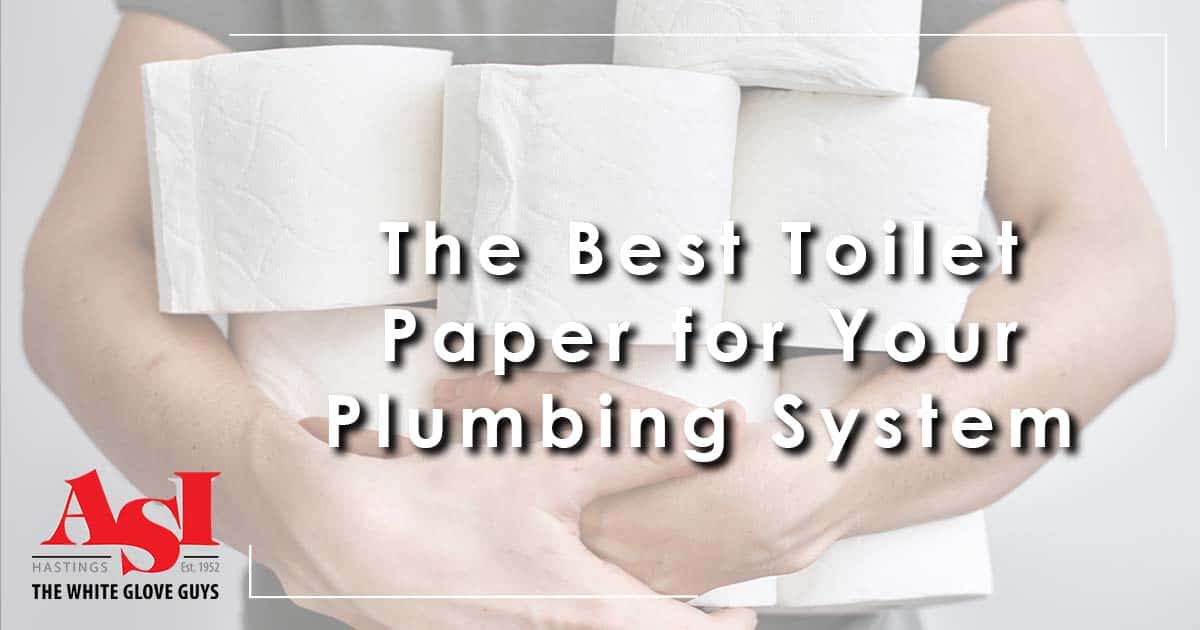There are a lot of types and brands of toilet paper available in the market. Some are even touted as premium quality. Although picking up your favorite brand may be tempting, you may want to consider how likely it is to clog up your plumbing systems. Here are our top recommendations to help you choose the best toilet paper to prevent clogs in your toilet system.
The Wrong Type Can Clog Your Pipes!
If you’ve ever flushed a wad of toilet paper down the toilet and had it back up again, you know it’s important to use only the right tissue. The wrong kind can cause blockages in your pipes, leading to costly repairs.
The most common culprits are wet wipes (even those marketed as “flushable”) and paper towels. These products are made from materials that don’t break down easily in water, so they can clog pipes and cause backups or overflows if flushed.
The Main Factors to Consider
When choosing your toilet paper, there are four main factors to consider.
How Fast it Dissolves
The problem with many toilet papers today is that they don’t dissolve fast enough. This can cause problems with your plumbing system, especially if you have a septic tank or sewer system rather than city water and sewer services.
Fast dissolving toilet paper dissolves quickly, meaning when you flush it down your toilet, it will go down without causing any problems with your pipes, septic tank, or sewer system. Some brands even claim that their toilet paper dissolves as soon as you drop it into the water.
Chlorine-Free
The problem with chlorine-bleached toilet paper is that it can cause damage to your pipes over time. The chemicals used in this process can corrode metal pipes, causing them to leak and eventually burst. Chlorine can also upset the balance of bacteria in your septic tank, affecting the breakdown of waste. If possible, opt for chlorine-free toilet paper.
Strength
The ply number refers to the number of sheets that make up a roll of toilet paper. Therefore, the higher the ply number, the thicker the toilet paper will be.
For example, a 2-ply toilet paper has two sheets per roll, while a 1-ply toilet paper only has one sheet per roll.
Eco-Friendly
Eco-friendly toilet paper is made from recycled materials, such as recycled paper and wood fibers. Some brands are made from 100 percent recycled materials, while others are made with a combination of virgin and recycled paper.
Why Ply Matters
Both 1-ply and 2-ply are fine in a septic system. The main difference between the two types is the roll’s number of plies (or layers). A single-ply roll has only one layer of paper, while a two-ply roll has two layers.
Toilet Paper That Can Hurt Your Plumbing System
There are some toilet papers that you should avoid if you don’t want to pay for plumbing maintenance.
Flushable Wipes
You flush these wipes down the toilet instead of throwing them in the trash can. They’re supposed to break down faster than regular toilet paper and turn into mush before making it into your sewer system.
Extra Soft Toilet Paper
This kind of toilet paper is ultra-soft and comes in many different brands. While it may seem like it would be easier on your skin than regular toilet paper, this type actually uses more water and contains more fibers. As a result, it’s more likely to clog up your pipes.
3 or 4-ply Toilet Paper
The extra layers of paper in a 3 and 4-ply toilet roll require more water to flush them away. The paper is also much thicker, meaning it’s more likely to clog.
The Best Toilet Paper to Use
There are many different kinds of toilet paper on the market, and not all are flushable. Toilet paper not designed to break down easily in water can cause serious problems for your plumbing system.
The best type of toilet paper to use is one that will dissolve in water and not clog your pipes. 1-ply or 2-ply tissue is fine, especially if it’s not too soft. And remember not to flush away too much at one time.
Need plumbing maintenance? Call the professionals at ASI for all your plumbing needs.







